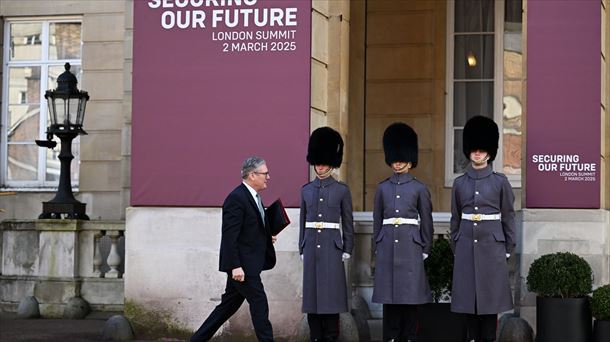“Please check this information”: The online campaign for the war in Ukraine, which is allegedly controlled by Russia, has been relying on a new strategy for months. Rather than simply passing on anti-Ukrainian fake news, the goal is to have Western media verify this information. Experts see this as a huge ‘distraction’ for journalists.
The collective ‘Antibot4Nawalny’, named after Russian opposition activist Alexei Navalny, describes this approach as ‘Operation Matryoshka’. The activists note attempts to influence the online service X. An X user named “Käthe” responded to a post from French radio station BFM in early December. She urged journalists to verify a video that appeared to resemble a Deutsche Welle report claiming a Ukrainian artist had “sawn the Eiffel Tower in half.” “The official media is not reporting this, so what should I believe?” she wrote.
Within a few hours, dozens of identical questions were asked to the French media via “Käthe”’s profile. The account then remained inactive until December 20, when it circulated a photo of graffiti allegedly caricaturing Ukrainian President Volodymyr Zelensky as a homeless person in Los Angeles – an image that another X user wanted the media to police.
Hundreds of profiles involved
The data from “Antibot4Navalny” and verified by the AFP news agency shows that there are dozens or even hundreds of profiles using this strategy of mass media requests. These are usually accounts that have been abandoned by users and then hijacked by hackers. The fact that they often flood online networks with their messages every minute suggests that the profiles are managed by computer-controlled bots.
The AFP analysis found that accounts that asked the media to check fake news spread fake news themselves some time later. For example, reports of alleged thefts in the Paris catacombs by a Ukrainian, the embezzlement of military aid to Kiev or manipulated street art images are intended to discredit Ukraine and give the impression that support for Kiev in Europe and the US is waning is.
According to AFP investigations, most of these messages were first shared by Russian Internet users, mainly on the online service Telegram and on news blogs.
Doppelganger campaigns
This new disinformation strategy follows the so-called doppelgänger campaign. Fake accounts on In this context, the Foreign Ministry recently complained about a large-scale Russian disinformation campaign about
The research director of the French CNRS institute, David Chavalarias, sees the new strategy as a “diversion tactic for fact-checkers” who have to deal with “difficult to verify topics”. According to the mathematician, it could also be about making false information more visible by using fact checkers as multipliers without their knowledge. Cyber expert Julien Nocetti notes “a certain dexterity in testing different methods” among the initiators of the campaigns.
Russians strive for visibility
A French security source told AFP she was “not surprised” by the new strategy. The Russians sought visibility: “They want people to talk about them, for better or for worse.”
The anti-Ukrainian images used in the Matryoshka campaign were spread on online networks by the same bots that were part of the doppelgänger campaign.
According to a December report from cybersecurity firm Recorded Future, the Doppelganger campaign remains very active. According to this research, at least 800 bots are spreading fake articles from alleged Ukrainian media.
Ukraine is the country most often targeted by “information manipulation,” EU foreign policy chief Josep Borrell said recently. He spoke of a ‘battle for stories’. Security is “no longer just a matter of weapons, but a matter of information.”
Source: Krone
I am Wallace Jones, an experienced journalist. I specialize in writing for the world section of Today Times Live. With over a decade of experience, I have developed an eye for detail when it comes to reporting on local and global stories. My passion lies in uncovering the truth through my investigative skills and creating thought-provoking content that resonates with readers worldwide.



